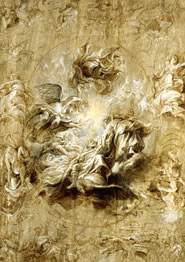
The Getty Center
THE J. PAUL GETTY MUSEUM ANNOUNCES THE ACQUISITION OF A ROMAN SARCOPHAGUS
New Acquisition will become the Centerpiece for a new Gallery Theme at the Getty Villa
]]>
June 9th 2008 – The J. Paul Getty Museum announced today the acquisition of a remarkable marble sarcophagus that dates to the third-century A.D. Never before seen by the public, Sarcophagus representing a Dionysiac Vintage Festival joins the Museum’s impressive collection of ancient funerary monuments, which are on view at the Getty Villa.
The Sarcophagus representing a Dionysiac Vintage Festival is not only an excellent example of late Roman relief work, but provides insight into how Romans perceived life and death. In addition, the Sarcophagus transcends its function as a funerary monument by touching on themes of daily Roman life, festivals, iconography, religious beliefs, and sculptural reproduction.
“The quality of relief carvings on the Sarcophagus, its state of preservation, and its lively subject matter adds a new dimension to the Museum’s antiquities collection, and helps us tell a fuller story about Italy’s rich cultural heritage,” explains Michael Brand, director of the J. Paul Getty Museum. “It will soon become the centerpiece for a new themed space at the Getty Villa.”
The provenance of the Sarcophagus can be traced back to the 19th century to the Villa Rondinini in Rome. In 1852, it was purchased by François de Corcelle, the French ambassador in Rome, and was in the possession of his descendents in France until 1994, when it was auctioned at Christie’s in London. It had been in a private collection since then.
At the Getty Villa, the Sarcophagus will form the centerpiece of an installation focusing on wine and wine-making in antiquity, featuring objects in the collection that were used for storing and drinking wine. “The making and drinking of wine was a vital aspect of ancient culture,” said Karol Wight, senior curator of antiquities for the J. Paul Getty Museum. “The Greeks produced terra cotta and metal vessels depicting the drinking of wine, while the Romans commissioned entire mosaic floors and marble sarcophagi around the subject. This gives us a wonderful opportunity to put on view a variety of works from the Museum’s permanent collection, including glass flasks shaped as grape clusters. It will also be fun to expand our public programming with events like the ‘Wine Tasting in Antiquity’ course, which was a huge hit and sold out in one day.”
The artist who carved the Sarcophagus is unknown, but the sculptural tradition indicates a workshop in Rome. With the sides rising perpendicular to the base, it belongs to a type known as a lenos, which reflected the form of a long trough used for stomping grapes to make wine.
Several visual cues place the Sarcophagus stylistically. The Vindemia scenes with Erotes (winged gods of love) harvesting and stomping grapes can be placed among a tradition of sarcophagi created in the late third century. These scenes were primarily used for children’s sarcophagi in the second century, but were later used in adult tombs. Erotes not only featured in Greek and Roman art, but were appropriated for Christian imagery as well, and appeared as a continuous motif throughout the history of Western art.
The use of the running drill for carving details in the lions’ manes and the hair of the Erotes, as well as their sharply drawn eyebrows and the holes in the corner of their eyes and mouths that create a shadowing effect, also indicate a late third-century style.
The symmetry in the figural scene strongly suggests the use of pattern books by the sculptor. The three Erotes treading grapes provide the most visible sign of repetition, with each body carved almost identically.
In addition to being the centerpiece for a new gallery theme, the Sarcophagus representing a Dionysiac Vintage Festival will unite with the Museum’s collection of funerary monuments including cinerary urns, tomb altars and stelae, and sarcophagus reliefs. The quality of the relief sculpture, preservation, and subject matter adds a new dimension to the iconography preserved on the Museum’s existing sarcophagi and reliefs. The Sarcophagus will be on view in its new space at the Getty Villa on June 12th.
Follow us on:


